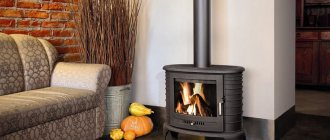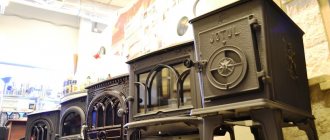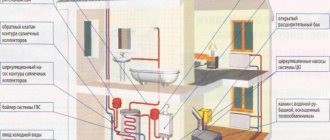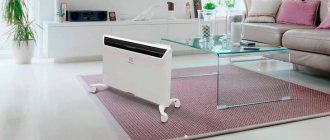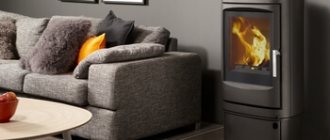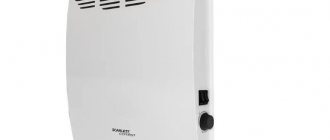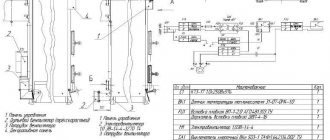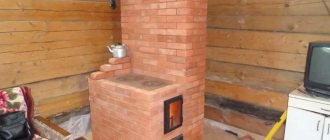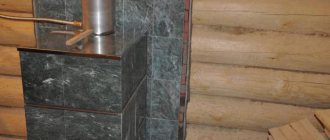Stove heating remains the most affordable option for heating a private home. It is convenient for seasonal living or holidays outside the city on weekends; it can be used as an auxiliary or main source of heat. Massive brick structures were replaced by compact steel and cast iron hearths. This review presents the 8 best lines of models of stoves and fireplace stoves that are in demand in the CIS.
Purpose of the article: to provide complete information about popular models of stoves for home and garden use. The material will be of interest to those who need to heat from 50 to 150 m² of area or from 100 to 300 m³ of residential premises.
Types of furnaces
In our country, many types of furnace equipment are built and operated; we list some:
- Swede
- Dutch
- Baby
- Heating and cooking
- Fireplace
- Stove with fireplace.
Types of stoves
Despite the difference in design, all stoves are characterized by the following parameters:
- Purpose.
- Maximum oven heating temperature.
- Duration of fuel combustion.
- The time required for the structure to warm up and begin full heat transfer.
- Smoke exhaust device.
- Scheme of the movement of warm gases through channels arranged in the furnace body.
- Oven shape.
- Options for finishing external walls.
- Material used in the construction of the furnace.
Stoves installed in homes have ancient traditions. Our distant ancestors cooked food on it, heated their homes with it, and used it as a sleeping place.
Fire safety requirements (FPR)
The PPB requirements stipulate the conditions under which correct installation of any type of furnace equipment is possible. To a greater extent, they relate to the protection of the floor and walls of the building from accidental fire (due to contact of wood with hot surfaces).
The following protective measures will ensure the safety of housing and people:
- The use of special fire-resistant materials that protect the walls and ceiling in the area where the stove and chimney are located (if the house is two-story, the ceiling between floors should also be protected);
- Impregnation of elements of wooden structures bordering the hot parts of the furnace with special compounds.
Compliance with all fire safety requirements and proper use of fire protection equipment is the main condition for the safe operation of home heating equipment.
Russian brick stove
The Russian brick stove has the following specific advantages:
- maintaining heat in the home due to long cooling;
- the ability to maintain heat in a room of any size;
- fire resistance.
Meanwhile, these devices also have a set of certain disadvantages:
- To build a furnace, you must have certain skills and knowledge, which is why it is advisable to invite specialists to construct it.
- To build a furnace, it is necessary to first build a separate, buried foundation.
- The oven is quite large in size and can take up quite a lot of space.
- This circumstance must be taken into account when determining the location where the stove will be installed.
Russian brick stove
For the manufacture of stoves, two materials are used - metal and brick (plain red, and fireproof, also called fireclay).
A stove for a house made of wood, for the manufacture of which I use steel or cast iron, the thickness of which is from 3 to 5 mm.
The wall of this design consists of two layers of metal. There is an air gap between them. This layer is designed to protect the room from so-called thermal shock.
Koza K (Kratki, Poland)
The products of the Polish manufacturer Kratki have been known in Europe since 1998.
A couple of years later they began to actively promote it in the CIS. Today the equipment of this TM is available in 56 countries of the world. The range includes fireplaces, free-standing stoves, bio-fireplaces and accessories for all of the above. One of the popular lines is Koza K, cast iron equipment in the Victorian style. The manufacturer offers several varieties of each model: with decorated doors, made of steel or cast iron, with or without a turbine, water circuit, thermostat. The inside of the firebox is completely lined with fire-resistant ceramics. There is a “clean glass” system against soot and a pipe for supplying air from outside - a convenient feature if it is important not to dry out the air in a heated room. Main characteristics of Koza K stoves from Kratki
| Characteristic | Koza K6 | Koza K7 | Koza K9 |
| power, kWt | 9 | 5 | 13 |
| Volume of heated room, m³ | 190 | 135 | 250 |
| Maximum log length, mm | 350 | ||
| Chimney diameter, mm | 130 or 150 | ||
| Size, mm | 578x630x490 | 536x557x413 | 766x660x546 |
| Weight, kg | 115 | 75 | 160 |
| price, rub. | 56 400 | 32 000 | 61 000 |
Impressions from use. An important advantage of the line is its appearance. Large firebox for 9-10 logs, large glass that keeps it clean. The products are made of cast iron, so you need to be ready to return to operating mode within an hour. This is compensated by the inertia of the system; on one tab it is possible to maintain a comfortable temperature in the room for 5-6 hours. If the case itself is massive and there is no doubt about its strength, then the quality of the fittings is average. The latches are made of thin steel; over time, the door handle ceases to sit securely in its place. There is a possibility that after a couple of years the fittings will have to be changed, but it all depends on the nature of use.
View a review of the k9 model, the oldest of the ones presented above:
Metal oven
Metal stoves have the following advantages:
The homeowner has the opportunity to purchase a finished stove, which includes a chimney, equipped with a temperature control system.
Advantages of a metal stove:
- Furnaces made of metal can have an interesting appearance.
- Fast heating, which allows you to warm up the air in the room to the specified parameters in an extremely short time.
- High thermal output.
- Long service life.
- To perform its functions, the stove can use any existing fuel.
Metal stove
But stoves made of metal also have some disadvantages, among them the following:
They are not suitable for use in large areas due to high fuel consumption.
Fast heating means fast cooling.
Metal stoves are classified as fire hazardous objects and the operation of the stove must be constantly supervised, and a fire extinguisher and other fire extinguishing means must be within reach.
If low-quality metal was used to make the stove, then after the first heating it may become deformed.
Fire-battery (TMF, Russia)
The Termofor company (after rebranding in 2022 - TMF) is a Novosibirsk manufacturer of stove equipment for home, garden and bathhouses. Positions itself as No. 1 in Russia. One of the company’s know-how is the development of the Fire-Battery steel stove. According to the manufacturer, when creating this long-burning model, all the shortcomings of existing designs were taken into account. Available in four modifications: the basic model without additional identifiers - with a cast iron burner, glass in the door; Light is the simplest model, without a hob and a viewing glass in the door. Both options may have an additional water heat exchanger for heating water, then the stove is designated respectively as Fire-battery B or Fire-battery Light B. The power of the equipment varies depending on the size of the housing and the number of sections of the slot convector, which can be 5, 7, 9 or 11 pieces.
The feature of the model is the fine tuning of the draft and a special lock in the ash pan, which prevents uncontrolled air leaks.
You can enter the smoldering mode, in which the operation of the furnace from one load is extended to 8 hours. There is a jet to ensure complete combustion of fuel. The chimney vents either backwards or straight up. The model is durable, because it provides replaceable protection for the firebox - inclined intermediate steel sheets are installed in its lower part above the cast-iron grate. Main characteristics of Fire-battery stoves from TMF (Termofor)
| Characteristic | Fire battery for 5 sections | Fire battery for 7 sections | Fire battery for 9 sections |
| power, kWt | 6 | 10 | 13 |
| Volume of heated room, m³ | 100 | 150 | 200 |
| Maximum log length, mm | 295 | 420 | 545 |
| Combustion chamber volume, dm³ (l) | 35 | 47 | 62 |
| Chimney diameter, mm | 120 | ||
| Size, mm | 370x555x760 | 370x680x760 | 370x805x760 |
| Weight, kg | 42 | 52 | 60 |
| Price, rub.* | 15 000 | 17 000 | 19 000 |
* The cost in parentheses is for the modification of the main model (light - without hob / B - with a heat exchanger tank / light B)
Impressions from use. The popularity of this model is easily explained - it has no obvious drawbacks. But at the same time, it maintains long-term combustion for up to 8 hours; any wood waste can be used as fuel. Compact, suitable for installation even in a small room. Quickly warms up the calculated volume of air: from 0°C to +25°C in 40-50 minutes. Withstands serious violations of operating conditions not recommended by the manufacturer. There are cases when such a stove was bought for one season and heated to the limit, heating twice the volume than indicated in the passport. However, the model is durable and repairable. In the modification with a hob, smoking may occur from under the cast iron pancake. This is observed at the ignition stage with the ash drawer open. Problems during operation can be caused by improper chimney design and the use of damp firewood.
Watch the video review of Termofor Fire-battery 7B:
Construction of a classic fireplace
Fireplaces installed in modern homes have combined all the best from those that were used in the Middle Ages and Russian stoves, which release heat into the home with high efficiency.
Fireplaces can be used not only as a source of heat, they can decorate the interior of the room where it is installed.
Construction of a classic fireplace
Fireplaces installed in modern homes have the following number of properties:
Cain can be installed directly into the wall, and those that are installed next to the wall. There is another way to install it in the form of an island.
Fuel port type. Fireplaces can be open or closed. The first option is a classic design with an open firebox; in the second version, this hole is closed with doors.
The type of fuel used is coal, gas, electricity.
The design of the fireplace directly affects the efficiency. Thus, the efficiency of an open fireplace is 15%, the closed type shows an efficiency of 70 - 80%. A closed fireplace can act as the only source of heat in the house.
Every homeowner can build such a structure in his home; this requires certain knowledge, a set of tools and the ability to work with them.
Some details need to be paid special attention:
- design and construction of the base (foundation), the larger the size of the fireplace, the larger the base should be;
- chimney design;
- volume of construction and finishing materials
- appearance of the structure as a whole;
- fire safety, fire safety measures must be provided at the design stage;
- Tools that will be necessary when performing construction work.
- trowel for working with mortar;
- hammer-pick for cutting bricks;
- jointing used to seal the seam;
- building level and plumb line, square;
- container for preparing a solution and soaking clay.
Advice from professionals
If the stove is mounted in a wall, it is sealed with brick.
Steel and especially cast iron stoves can have a very beautiful design. Such products should not be covered with bricks or protected with a screen. You need to worry about their successful placement in advance.
- A structure for heating several rooms can be placed directly in a wall or partition. This installation is more complicated and requires bricking.
- When installing the stove and chimney, carefully ensure that all structural components are freely accessible. There should be no difficulty in cleaning and inspecting the elements.
Heating a wooden building with a metal stove is a completely rational solution for a country house or cottage. The structures are light, compact, and very effective, but during installation a number of rules must be followed.
Where is the best place to put a stove in a wooden house?
As a rule, the location for installing the stove must be determined at the design stage of the house. This is necessary in order to ensure efficient heating of the house and make it as safe as possible. What criteria should a homeowner be guided by when planning where to install a future furnace?
Where is the best place to put a stove in a wooden house?
The heat source can be installed in rooms whose area is at least 16 sq.m. the installation must be carried out in such a way that there are no floor beams under the stove intended for installing floors. And at the place where the chimney exits there should be no ceiling beams or rafters.
To reduce the size of the chimney pipe, it makes sense to locate it in the center of the house. In this case, the chimney will exit onto the roof near the ridge of the roof. Construction of a stove in close proximity to the wall is impractical, since a significant part of the heat will be directed to heating the street. In addition, placing the stove near wall structures increases the fire hazard. Based on the above, we can conclude that placing the stove in the center of the room would be optimal.
A wood-burning stove will be at its most efficient if heat is transferred from all its surfaces. This design can easily cope with heating one or several adjacent rooms. This can be taken into account when placing rooms at the planning stage.
To provide heat to adjacent rooms, the stove is installed between rooms in a partition. In order to keep it warm in a four-room house, it is best to install it at the junction of the partitions so that one of the walls of the stove opens into the room. With this arrangement, it is possible to organize the exit of the firebox to the kitchen.
Wood processing
The most common protective agents include special impregnations (fire retardants) and transparent mastics. The following elements of wooden structures are usually processed by them:
- ceiling beams;
- floorboards in the area where the stove is installed;
- walls adjacent to it.
Additional Information! When choosing products, you must keep in mind that mastic has a higher fire protection rating than colorless impregnation.
Fire retardant treatment of wood elements can be carried out not only by representatives of the Ministry of Emergency Situations, but also by the owners of the house themselves. In the second case, they will need to obtain a special certificate confirming the correct installation of the stove.
Foundation for the stove
If you want to build a fireplace in your home, then first of all you need to think about arranging a foundation for it. A properly executed foundation will ensure its long-term and safe operation. In case of negligence or mistakes made, it will undoubtedly lead to deformations, subsidence of the fireplace, and the appearance of cracks.
The main requirements for the foundation can be defined as follows: reliability and lack of connection with the foundation of the entire building.
The optimal solution would be to build a capital foundation, and it can be built simultaneously with the construction of the foundation for the main building. At the same time, creating a single foundation is unacceptable. The thing is that each foundation is designed for a certain load and as a result they have different shrinkage.
There must be a gap of at least 50 mm between them; it must be filled with sand or other bulk material and compacted thoroughly.
The dimensions of the foundation in plan should be larger than the size of the base of the fireplace. That is, it should protrude from the fireplace by 100 - 150 mm. The depth of occurrence depends entirely on the properties of the soil. Practice shows that for a one-story house it is enough to deepen the fireplace foundation by 0.5 - 0.6 m; if the house is higher, then the depth should accordingly be greater - up to 1 m.
What else is important?
The main fuel for fireplace stoves is wood.
Logs can be of different sizes, and this must be taken into account. The larger their size, the easier and faster it is to prepare firewood and put it in the firebox. The manufacturer usually indicates the maximum allowable log length, and it is better if in your stove this value is not less than 300 mm. If you go to the store, be sure to take a tape measure with you. With it, you can not only estimate the size of the loaded firewood, but also estimate the volume of the firebox, which manufacturers often do not indicate in the specifications. Summary table with furnace models
| Model, country of manufacture | Heated volume, m³ | Features of the line | Price range, rub. |
| 1. Termofor/TMF Fire-battery (Russia) | 100, 150 and 200 |
| 13000-21000 |
| 2. Zhara (Russia) | 100 and 200 |
| 12000-17000 |
| 3. META Ardenfire Marseille (France/Russia) | 150, 200 and 250 |
| 41000-64000 |
| 4. Eco-fireplace Bavaria (Russia) | 90-195 and 105-225 |
| 18000-27000 |
| 5. Thorma Andorra (Slovakia) | 98-200 |
| 69000-77000 |
| 6. Kratki Koza K (Poland) | 135, 190 and 250 |
| 32000-61000 |
| 7. Supra Tomera (France) | 150-320 and 300 |
| 77000 |
| 8. La Nordica Ghisa (Italy) | 172, 200 and 258 |
| 84000-127000 |
Channel and ductless furnaces
Channel and ductless furnaces
The peculiarity of channel furnaces is that their design includes channels made in horizontal and vertical planes. Heat moves through them, which in direct-flow structures simply goes up. It should be understood that the movement of heat through the channels may be difficult. Therefore, the design of the furnace provides for the presence of elbows. To prevent stagnation of warm air, certain devices are installed that regulate combustion modes. There is a summer mode, during which the stove warms up and after that you can switch to full heating.
How to properly heat the second floor
Supplying heat to the second floor of a house is a rather difficult task. As an option, you can consider installing a fireplace equipped with additional equipment. The fireplace has a number of advantages. Among them are the following:
- ease of operation;
- small sizes;
- use of almost any fuel.
How to properly heat the second floor
In fairness, it should be noted that most of our people consider it a luxury item, but this design is capable of combining democracy, aesthetic properties, and excellent performance of its main task - heating the room.
Heat supply to the second floor due to air convection. That is, passing by a heated fireplace wall, the air receives thermal energy and continues to move upward through a special box. Warm air is supplied to rooms located on the second floor through air ducts, which must be covered with thermal insulation. This is necessary to minimize heat losses and ensure fire safety.
Budget price segment
#1
Teplodar Matrix-100
Heating stove with a universal chimney and long-burning mode
Expert rating:95/ 100
The model is designed for heating rooms, equipped with a hob, a convection system and a long-burning mode, made of heat-resistant steel.
The device has a top and rear chimney connection, which allows you to adjust the location of the stove to the specific layout.
Characteristics:
- thermal power - 10 kW;
- connection to the chimney - top/rear;
- functionality - long burning mode;
- equipment - hob with 1 burner, ash box;
- pipe diameter - 115 mm;
- dimensions - 32*60*61 cm;
- weight - 52 kg.
Self-installation of a Russian stove
To build a classic Russian stove, you will need about 1,650 bricks, a valve with dimensions of 260 by 240 mm and a certain volume of clay and sand, which is enough for 80 buckets of mortar.
Self-installation of a Russian stove
To carry out the work, it is necessary to use red bricks; fire-resistant (fireclay) bricks are used to lay out the firebox. When doing masonry, you must remember that the seams that are formed during masonry should be small. no more than 5 - 7 millimeters.
Each level must be laid using a building level and a plumb line. This determines how well the oven will be installed as a whole.
The construction of the stove must be carried out in accordance with the requirements of the order. This is the name of the diagram, which indicates the placement of bricks in each individual row. Such orders exist for almost all types of Russian stoves.
It should be noted that laying a stove is a rather complex construction process and requires a highly qualified mason. It’s not for nothing that there is a separate specialty for stove makers. And to build a stove at home, it is better to invite just such a specialist.
Equipment characteristics
Recently, thanks to the variety of designs, potbelly stoves can complement the overall style of the interior of the room. Thus, this is not only a heating device, but also a kind of decoration for the room. The stove runs on wood no longer than 25 cm or other solid fuel, it all depends on the preferences of the owners and their financial capabilities.
The main functions of a potbelly stove installed in a country house:
- Heating.
- Possibility of cooking.
- Interior decoration.
Increasingly, a stylish potbelly stove is becoming a serious competitor for fireplaces, because, in addition to other positive qualities, the device is compact. It is easy to connect and, if necessary, move it to a new location or place it outside to fry meat in the fresh air.
A modern potbelly stove not only heats the room, but also decorates the room
If you need to frequently transport the stove from one place to another, then it is better to give preference to collapsible models. As a rule, they have an easily removable top cover, which often serves as a hob. This potbelly stove also features detachable legs and a multi-section chimney. The stove does not take up much free space, is a mobile piece of furniture and is easy to transport. Using a potbelly stove completely eliminates the risk of carbon monoxide poisoning, because it leaves the room through a pipe. It turns out that the safety of the device and the power of operation depend on the installation of the pipe.
Collapsible model of a potbelly stove
